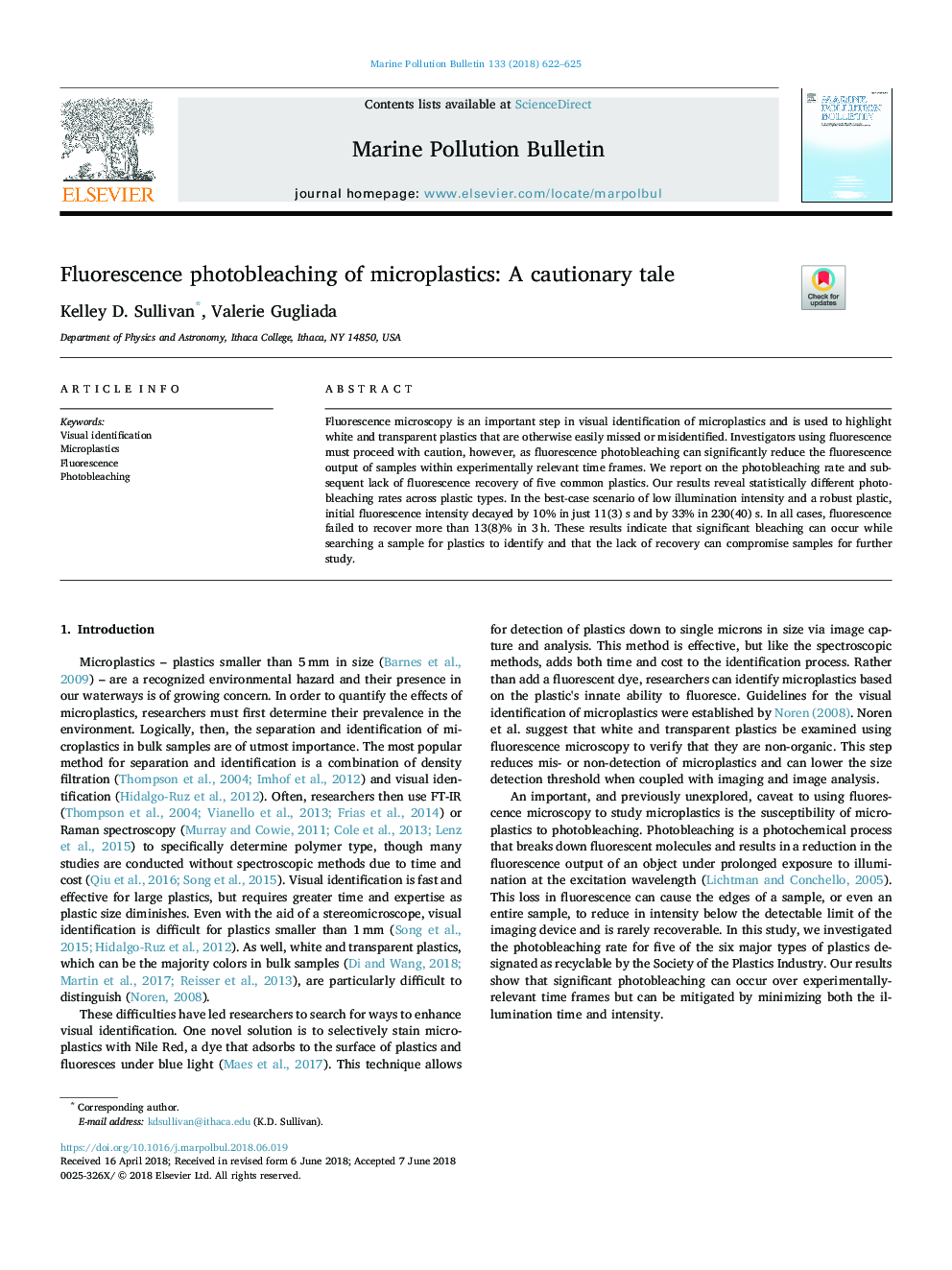| Article ID | Journal | Published Year | Pages | File Type |
|---|---|---|---|---|
| 8871149 | Marine Pollution Bulletin | 2018 | 4 Pages |
Abstract
Fluorescence microscopy is an important step in visual identification of microplastics and is used to highlight white and transparent plastics that are otherwise easily missed or misidentified. Investigators using fluorescence must proceed with caution, however, as fluorescence photobleaching can significantly reduce the fluorescence output of samples within experimentally relevant time frames. We report on the photobleaching rate and subsequent lack of fluorescence recovery of five common plastics. Our results reveal statistically different photobleaching rates across plastic types. In the best-case scenario of low illumination intensity and a robust plastic, initial fluorescence intensity decayed by 10% in just 11(3) s and by 33% in 230(40) s. In all cases, fluorescence failed to recover more than 13(8)% in 3â¯h. These results indicate that significant bleaching can occur while searching a sample for plastics to identify and that the lack of recovery can compromise samples for further study.
Related Topics
Physical Sciences and Engineering
Earth and Planetary Sciences
Oceanography
Authors
Kelley D. Sullivan, Valerie Gugliada,
